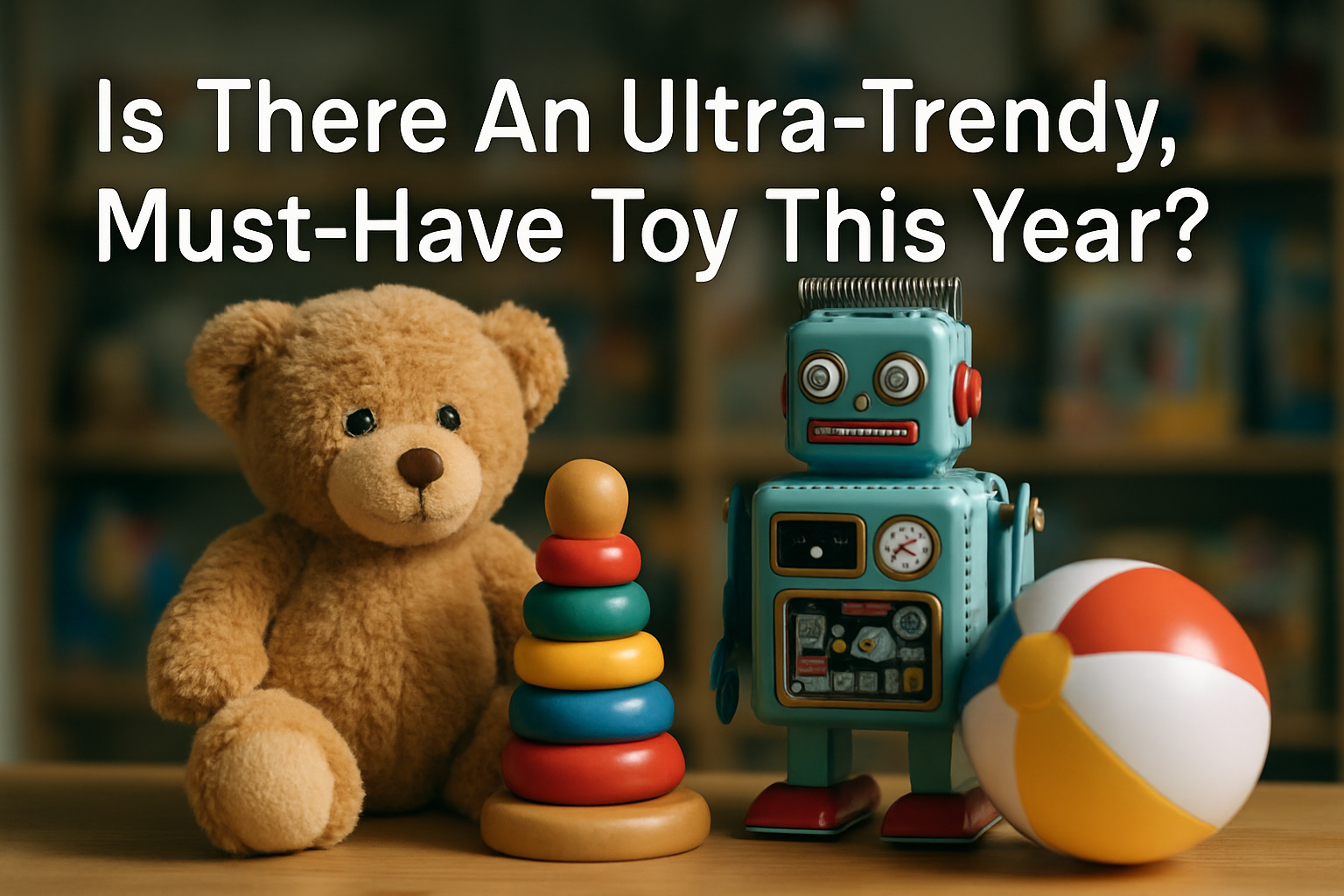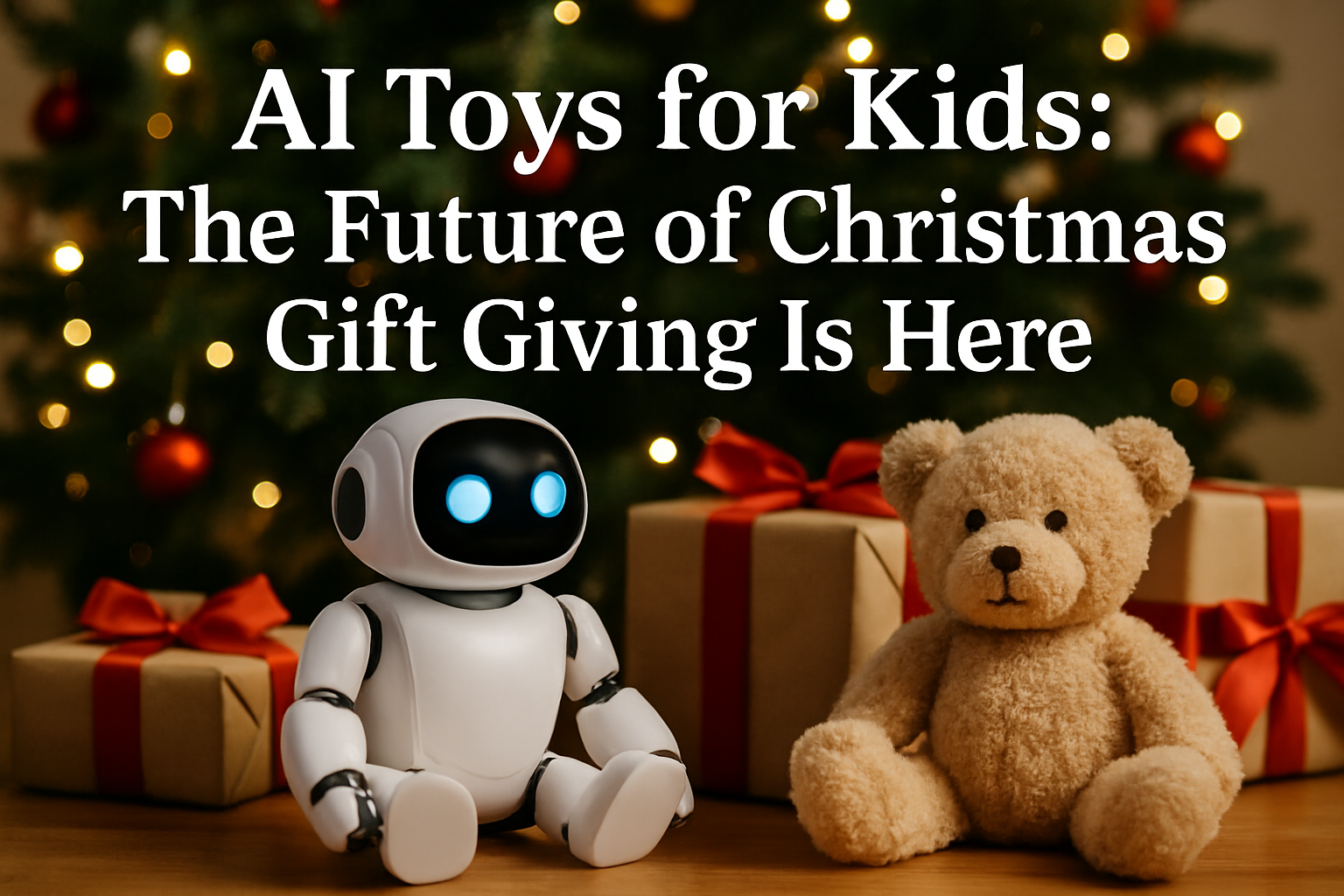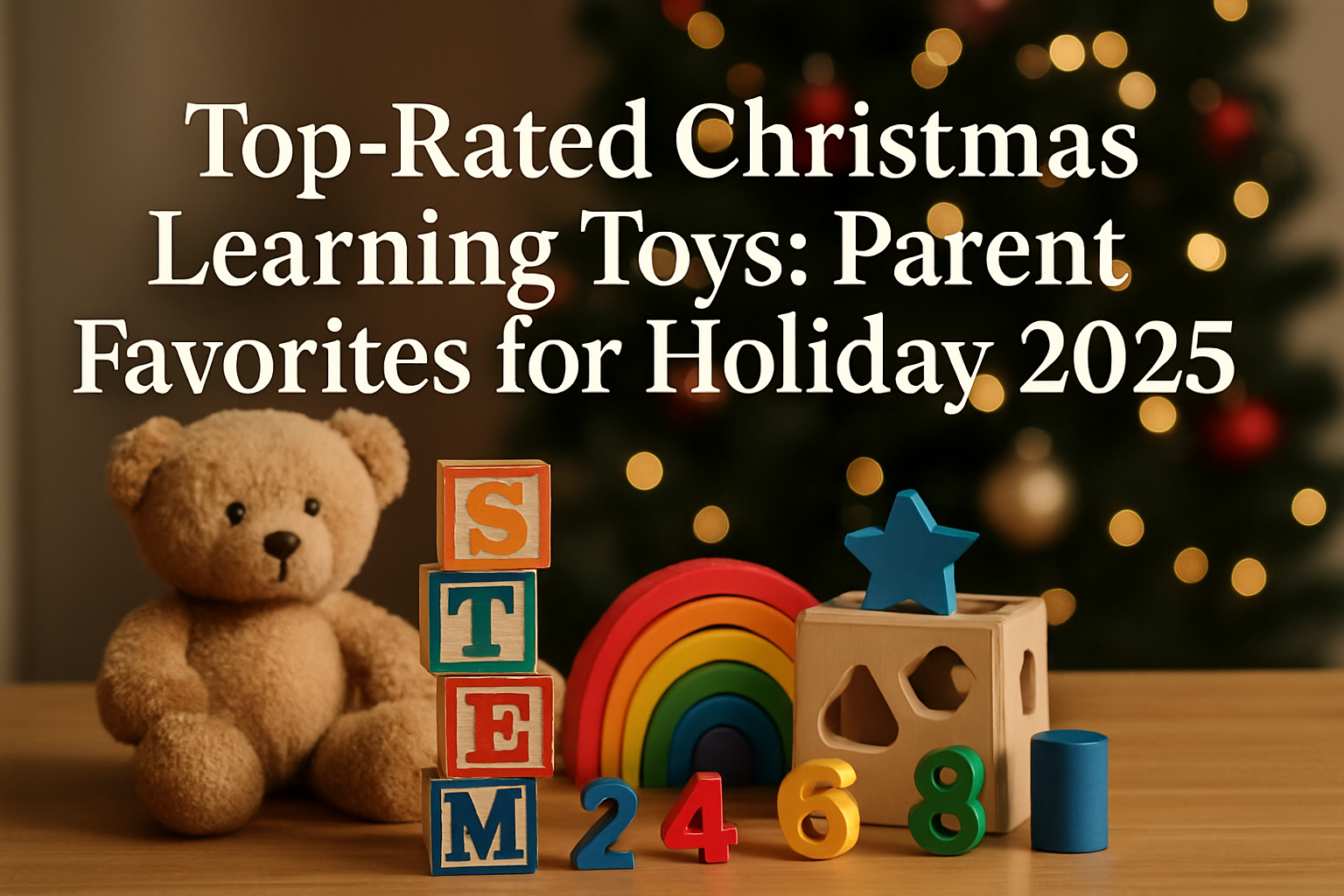AI Toys for Kids: The Future of Christmas Gift Giving Is Here
Introduction and Overview There's an electrifying buzz in the air as childre...
Add description, images, menus and links to your mega menu
A column with no settings can be used as a spacer
Link to your collections, sales and even external links
Add up to five columns
Add description, images, menus and links to your mega menu
A column with no settings can be used as a spacer
Link to your collections, sales and even external links
Add up to five columns

There's an electrifying buzz in the air as children eagerly anticipate the unveiling of this year's must-have toys. Parents, just as enthusiastic, are scouring stores and online shops in search of the latest and greatest enhancements to their kids' playtime. The excitement radiates from not only children but also from adults who remember the joy of unwrapping their favorite toy on a special occasion. The quest for the top trend in playthings fuels conversations and camaraderie among families, adding an extra layer of anticipation to the holiday season.
The demand for these toys reflects current societal trends, where children are drawn not just to toys for entertainment but also to those that foster creativity and social interaction. The anticipation surrounding these toys promises a delightful year of joy, connection, and imaginative adventures. As families embark on this quest for the perfect gift, the excitement of discovering what makes a toy truly special becomes part of the fun itself.
The toy industry is witnessing a vibrant resurgence, particularly through the revival of nostalgic icons and innovative collaborations. The recent surge in popularity of certain iconic characters reflects how well nostalgia appeals to all ages. Nostalgic figures are being reintroduced through modern twists that captivate both the understanding of old fans and the intrigue of new audiences. This phenomenon is especially evident in the resurgence of one timeless character who has been successfully rebranded following a striking visual spectacle in cinema. The combination of a classic figure with contemporary storytelling boosts engagement levels, drawing both children and adults eager to relive their childhood memories.
Moreover, collaborative creations blend the worlds of beloved figures with contemporary culture. These partnerships not only elevate the status of traditional toys but also introduce them to relevant demographics who might not have engaged otherwise. For instance, dolls and figures that draw inspiration from popular influencers are making waves by combining entertainment and collectibility. By working with influencers, the collectors' market sees a fresh influx of unique items. This mixing of old and new has led to a product range that appeals to consumers looking for both trendy items and nostalgic figures.
Additionally, the modern marketing approach in the toy industry embraces a blend of limited edition releases and strategic branding that captures attention through exclusivity. By infusing contemporary aesthetics and collaborative designs, brands have successfully activated a passion for collecting among consumers. As a result, these collectibles hold significant promise, turning typical playthings into coveted items that enhance their allure. This shift emphasizes how the toy industry is adapting to meet varied consumer preferences, ensuring that both nostalgia and modern trends work synergistically.
Traditional toys are undergoing a metamorphosis, redefined to fit the preferences of today's consumers. Classic games, such as strategy board games, have been adapted for the modern age, incorporating trendy designs and enhanced functionalities. With the rise of solo play, certain traditional games are revitalizing the experience with advanced technology, making it possible for anyone to enjoy them independently. The thoughtful integration of features like artificial intelligence provides an engaging challenge, ensuring that the timeless aspects of these games remain appealing while also reflecting current technological trends.
The trend towards DIY toys is also on the rise, fostering creativity and engagement. Kits that allow individuals to construct their own toys are gaining popularity, enabling play beyond the traditional boundaries. These DIY creations, such as handcrafted wooden devices that emulate classic arcade games, bring a sense of accomplishment. This approach not only encourages creativity but also teaches valuable skills, as players venture to build their own fun activations. By choosing to create rather than consume passively, children and adults alike are experiencing a renewed connection to their toys.
Moreover, the evolution of toys emphasizes sustainability, reflecting a growing priority among consumers. Many modern adaptations are designed to be more environmentally friendly, allowing for ethical consumption while maintaining play value. This focus on sustainable practices is becoming a hallmark of the modern classics category. By reshaping traditional toys into eco-conscious products, manufacturers are aligning themselves with the sociocultural values of today's society, positioning these modern classics firmly in the hearts of consumers who value responsible production alongside playful enjoyment.
This year, children are captivated by a blend of nostalgic and trendy toys that amplify their playtime experiences. The resurgence of beloved characters in the toy realm reflects a blending of the old and the new, allowing children to engage with figures they recognize while also exploring innovative play patterns. Toys that focus on music and interaction have seen a notable uptick in popularity. Karaoke microphones, which encourage children to express their creativity, are at the forefront as kids channel their inner performers. Similarly, interactive games that promote socialization and competition among friends are taking center stage, enhancing the fun factor while fostering important skills like teamwork and communication.
Additionally, the influence of modern toy culture cannot be overlooked. The toy industry continually adapts to reflect current trends, making it essential for products to catch the attention of young consumers. This momentum shapes the types of toys that become must-haves. Items that tap into children's favorite media, from animated shows to online personalities, not only keep playtime exciting but also provide avenues for imaginative play. This bond between familiar characters and the latest toy innovation creates a vibrant market, appealing to both children and parents who value engaging and educational experiences.
Moreover, the integration of technology in toys has revolutionized traditional play. With the advent of smart toys, children are not only entertained but also educated through hands-on activities that stimulate their minds. Toys that merge physical play with digital experiences offer a multifaceted approach to engagement, allowing for a variety of activities that can be tailored to the child's interests. As parents seek to encourage active learning in their children, these modern toys are increasingly sought after, establishing themselves as essential items in toy collections.
In today's toy market, building kits and STEM-focused toys are garnering considerable attention and demand. The importance of these toys lies in their ability to introduce children to foundational skills in science, technology, engineering, and mathematics from a young age. By engaging with building toys, children develop critical thinking skills and problem-solving abilities while enjoying the hands-on experience of constructing their own creations. Such activities spark curiosity about how things work and encourage a mindset geared towards exploration and invention.
Magnetic tiles and customizable building sets have emerged as favorites in the realm of building toys. These products allow children to engage in creative play while laying the groundwork for spatial awareness and design thinking. Children can experiment with different configurations and structures, leading them to discover fundamental principles of engineering in a fun and engaging way. As a result, parents are increasingly turning to these types of toys, aware of their potential for fostering both creativity and analytical skills.
The current focus on building toys reflects a broader educational trend that promotes interdisciplinary learning. As educators seek to equip students with the skills necessary for the future job market, toys that facilitate STEM learning at home have become invaluable. By combining play with educational concepts, these toys provide enriching experiences that cultivate a sense of inquiry and innovation in young minds. As children play, they are not just entertained; they are actively learning and preparing for a world that values critical thinking and creativity.
The Flying Orb Ball stands out as a unique interactive toy that has captured the attention of children and parents alike. This toy features a distinctive design that allows it to hover and glide through the air, powered by advanced flight technology. Made with durable materials, it’s not only lightweight but also safe for indoor and outdoor play. The device requires minimal setup and is easy to operate, making it accessible for kids of different ages. Its colorful and eye-catching appearance adds an element of excitement, inviting children to interact with it continuously.
Age suitability is a vital consideration for any toy, especially those designed for active play. The Flying Orb Ball is engineered to be enjoyed by a wide range of ages, typically from 6 and up. This inclusivity promotes interactive play, facilitating not only physical activity but also social interaction among peers. Engaging with the Flying Orb encourages children to develop coordination skills as they learn to control their throws and catches. Moreover, it provides a healthy outdoor option to reduce screen time, fostering creativity and imaginative play scenarios.
Benefits of interactive play extend beyond mere enjoyment. Engaging with toys like the Flying Orb Ball stimulates cognitive development and physical coordination. Children can practice teamwork and develop their social skills as they play with friends or family members. The dynamic nature of the Flying Orb invites them to not just observe but actively participate, enhancing their ability to think on their feet and respond to changing environments. This toy embodies the spirit of active, interactive, and imaginative play that can be invaluable for young minds.
Diamond magnetic building blocks emerge as an excellent option for children aged 3 to 8 years, providing an avenue for creativity and exploration. The allure of these blocks lies in their innovative design, which allows kids to connect and construct various shapes and structures using magnets. Young builders can develop their spatial awareness and problem-solving skills as they experiment with different configurations, making each play session a new opportunity for learning. The tactile nature of building blocks appeals greatly to younger children, engrossing them in hands-on activities that keep their minds engaged.
The educational value of building blocks cannot be overstated. Such toys encourage children to employ their imagination and engage in constructive play, aspects that are fundamental to early childhood development. As they create intricate designs, they learn about geometry, balance, and symmetry in a fun and interactive way. Moreover, manipulative skills are honed as they connect and disconnect frequently, promoting fine motor skills that are crucial at this stage of life. Parents often find that these blocks serve not just as toys, but as valuable learning tools that can spark curiosity and foster a love for STEM (science, technology, engineering, and mathematics) concepts.
Encouraging collaborative play is another significant advantage of magnetic building blocks. Group play with these toys not only enhances social skills but also sparks dialogue among peers, as children share ideas and work together on projects. The combination of competition and teamwork fosters an environment where children can thrive, building their confidence as they showcase their creations to one another. This balance of social interaction and individual achievement makes diamond magnetic building blocks a highly sought-after item among both children and parents looking for enriching play experiences.
The landscape of children’s toys has been transformed by the emergence of robotic toys that engage young minds through interaction. Interactive robots, like many available today, provide an exciting introduction to robotics and programming for children. These toys not only entertain but also educate, inviting kids to explore technology through hands-on experience. Equipped with various sensors and features, these robotic toys can respond to voice commands and touch, creating a natural learning environment that captivates children’s curiosity and encourages exploration.
One of the key benefits of interactive robotic toys lies in their ability to enhance educational experiences. By engaging in voice and touch interactions, children can learn fundamental concepts of coding and robotics without the prohibitive barriers often associated with conventional learning techniques. This tactile approach makes abstract ideas more tangible, enabling kids to grasp complicated subjects through play. Furthermore, these toys foster critical thinking as children must solve problems and make decisions based on the robot's responses, developing analytical abilities that will serve them throughout their lives.
Robotic toys also bridge the gap between play and learning, combining entertainment with educational value seamlessly. They spark a passion for STEM subjects in a fun and relatable way, inspiring the next generation of innovators. As children interact with these robots, they enhance their communication skills and develop teamwork when collaborating with others to achieve common goals. Such experiences provide a solid foundation for future learning opportunities, making robotics a significant step forward in modern education approaches for young learners.
The Toy Insider has highlighted a selection of unique toys for 2024-2025 that have captured the imagination of children and parents alike. Among these toys is a sensory enriching option that combines creativity and hands-on play, allowing young ones to indulge in spontaneous creation while enhancing their fine motor skills. Another notable mention includes building sets that encourage imaginative play and collaborative construction. These sets blend tactile engagement with artistic innovation, specifically designed to appeal to various age groups.
Age appropriateness is a critical factor for the toys featured in the Toy Insider’s recommendations. For example, some of these toys are specially crafted for preschoolers to stimulate early childhood development. They incorporate elements that foster sensory exploration and cognitive skills, making them not only enjoyable but also educational. In contrast, the building sets cater to slightly older children, providing layered complexities that challenge their problem-solving abilities and encourage teamwork among peers. This thoughtful categorization ensures that there’s something for every age group, promoting inclusive play that is age-appropriate and skill-enhancing.
Key features of these toys extend beyond their immediate play value. They often include eco-friendly materials and safety certifications, ensuring peace of mind for parents. Various pieces are also designed to spark curiosity and facilitate open-ended play, which can lead to hours of enjoyment and discovery. The integration of these thoughtful features contributes to a well-rounded and enriching play experience, making the selected toys not just fun, but valuable tools for development and learning.
In its 2025 guide, Good Housekeeping showcases a variety of trending toys that reflect modern themes and innovative concepts. Among these are options that harness the power of technology to create interactive experiences without compromising imaginative play. This blend of tradition and technology demonstrates the evolving nature of toys, appealing to both contemporary children and their parents. The toys not only entertain but also provide educational benefits, making them highly sought after in families focused on balanced development.
Another trend highlighted in the Good Housekeeping recommendations is the resurgence of classic toys with a modern twist. These toys incorporate features that elevate traditional play, introducing new mechanisms or combined functionalities that engage children in unexpected ways. This journey into nostalgia, paired with modern enhancements, allows children to enjoy timeless activities while experiencing fresh interactions. The thematic diversity found in this year's selections showcases how toys can adapt to ever-changing interests while remaining rooted in fundamental play values.
Furthermore, the innovative concepts present in these trending toys often focus on collaboration and social play. Many selections are designed to be played with friends or family, encouraging cooperative strategies and interpersonal communication among children. This emphasis on teamwork and shared experiences aligns with contemporary beliefs about the significance of social development during childhood. Overall, the toys featured in the Good Housekeeping guide not only reflect current trends but also lay the groundwork for valuable life skills, creating a meaningful impact on children's growth and development.
The toy industry has witnessed significant shifts over recent years, driven by changing consumer preferences and a growing emphasis on child safety and education. Two major trends that stand out are the rise in eco-friendly toys and the increasing integration of technology in playthings. Eco-conscious parents increasingly prefer toys made from sustainable materials. This shift reflects a broader societal awareness of environmental issues and the need to ensure that the next generation grows up with a sense of responsibility toward the planet. Additionally, toys that encourage creativity and imaginative play have gained prominence. These trends highlight the importance of selecting engaging, safe toys that not only entertain but also contribute positively to a child's development.
Finally, it's crucial to recognize the value of play in a child's development. Playtime is not merely a way to pass the hours; it serves multiple purposes in a child's growth, including enhancing cognitive skills, fostering social interactions, and encouraging emotional resilience. Choosing toys that are not only fun but also educational can significantly impact a child's learning experience. Toys that promote problem-solving, teamwork, and creativity facilitate a productive playtime that can prepare children for future challenges. As trends continue to evolve, prioritizing safe and engaging toys remains fundamental for both manufacturers and parents alike, underscoring the necessity of making informed choices that align with the best interests of children.

Introduction and Overview There's an electrifying buzz in the air as childre...

Introduction and Overview There's an electrifying buzz in the air as childre...
Sign up for updates, sneak peeks and a coupon for 10% OFF your first order!